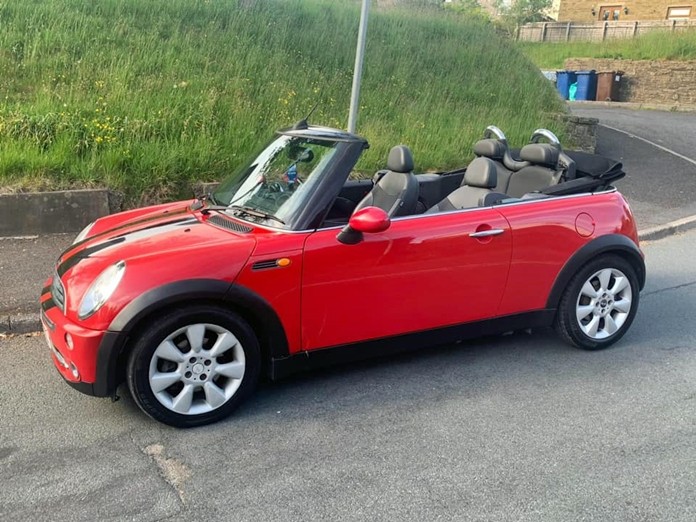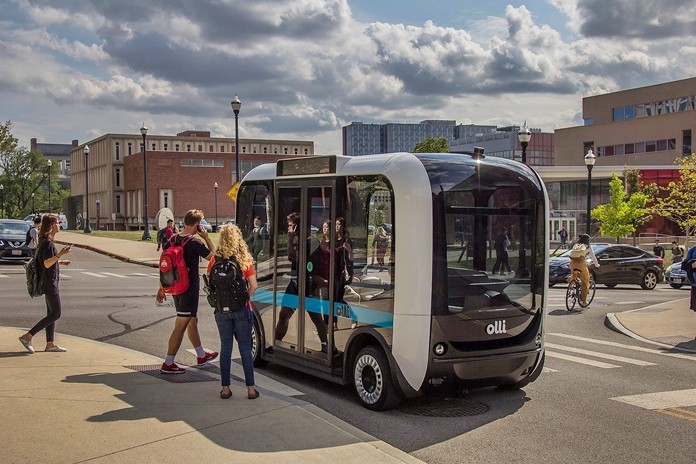
The French GP is being held at the Paul Ricard circuit again. Paul Ricard, yes the Ricard aperitif people. The starting time in Thailand is 8 p.m. and we watch in Fletchers Folly Siam Country Club Road, opposite the Maxxis outlet and 300 meters before the Chicken (Mitkamol) Intersection.
With Hamilton being now 29 points in front in the championship chase, he is looking more than just a good bet to pick up his 6th World title. His only challenger is Ferrari’s Sebastian Vettel, but Seb is making too many mistakes and would have to lift his game. Can he do that? I doubt it. Ferrari would do better to pass the torch on to the youngster Charles Leclerc who appears to be less mistake-prone and should be given his head for the next 14 Grands Prix.
MINI it certainly ain’t
BMW/MINI has another variant, being a convertible. Styling-wise, the convertible carries the same front-end design and tail-lights as the Mini three-door hatch on which it is based. However, it is also 98 mm longer, 44 mm wider, 7 mm higher and has a 28 mm longer wheelbase compared with the outgoing version. BMW should have put this car on a stringent diet before it was released. BMW has strayed so far away from the original Mini concept of Sir Alec Issigonis, that they shouldn’t be called “mini” any longer.

Ford to close ‘unsustainable’ Wales plant that employs 1,700
London (AP) – A Ford engine plant in Wales that employs 1,700 people is “economically unsustainable” and will close next year, the carmaker announced.
The company blamed declining sales of gasoline engines and the end of a contract with Jaguar Land Rover for the closure, due in September 2020.
Ford’s European president, Stuart Rowley, said “changing customer demand and cost disadvantages, plus an absence of additional engine models for Bridgend (Wales) going forward make the plant economically unsustainable in the years ahead.”
He said there would be an “enhanced separation program,” including help for employees to get new jobs or start their own businesses.
The Bridgend plant opened in 1980 and is a major employer in Wales.
Jeff Beck, regional organizer for the GMB union, said the news was “a real hammer blow for the Welsh economy and the community in Bridgend.”
Former Welsh government leader Carwyn Jones, who represents Bridgend in the Welsh Assembly, said “this has all been very sudden. There was no warning about this at all.”
“From my perspective I want to know what’s going on as to with the workers and want to know a reason for the decision, and to work with Welsh government to see what we can do to help the workers here,” he said.
The news is the latest setback for Britain’s auto industry, which is struggling both with uncertainties over Brexit as well as global issues buffeting the sector.
Ford announced last month that it was cutting 7,000 white-collar jobs worldwide, several hundred of them in Britain.
Honda announced in May that it will close its western England car factory in 2021. And in February Nissan announced that it would not build a new SUV in Sunderland, northeast England, as previously planned.
Jaguar Land Rover, owned by India’s Tata Motors, is also cutting jobs in Britain.
Many businesses are worried about the uncertainty around Britain’s stalled departure from the European Union. Executives have held back on investments as they lack clarity on what commercial relations will be like between Britain and the rest of the EU, its biggest trading partner.
British Trade Minister Graham Stuart insisted Brexit was not to blame for the Ford closure, stressing that the automotive industry is in “massive global flux.”
(Unfortunately the British Trade Minister is correct with his overview of the world’s automotive industry. The world’s biggest producer, China, is also seeing a slowdown in the industry, and Thailand likewise.)
Autonomous cars now being blamed for the aviation slowdown
Stephen Rice & Scott Winter, Embry-Riddle Aeronautical University
As driverless cars become more capable and more common, they will change people’s travel habits not only around their own communities but across much larger distances. Our research has revealed just how much people’s travel preferences could shift, and found a new potential challenge to the airline industry.
Imagine someone who lives in Atlanta and needs to travel to Washington, D.C., for business. This is about a 10-hour drive. A flight takes about two hours, assuming no delays. Add to that the drive to the airport, checking in, the security line and waiting at the gate. Upon arrival in D.C., it may take another 30 minutes to pick up any checked bags and find a rental car – and even more time to drive to the specific destination. The average person would estimate a total travel time of four to five fours. Most people would choose to fly instead of driving themselves.
However, if they could have a fully driverless car take them there, the choice changes. Passengers could eat, drink, work and sleep during the 10-hour drive. They could leave whenever they want, and pack whatever they want – including liquids and pocketknives – with no searches or scans. When they get to D.C., they wouldn’t have to find a rental car and navigate to the actual place they’re going.
Which would you choose? Now imagine the self-driving car has a reclining seat with actual legroom, or even a bed. It’s more than a little tempting.
What do consumers say?

As experts in public opinion research, we know that the American public loves how quickly flights can cover large distances, but hates the security checks, long lines, delays, risk of losing baggage and overall hassle of the flying experience.
We also know that at the moment, most people are reluctant to ride in driverless vehicles – including school buses and even ambulances that could speed their treatment in an emergency. However, our data also shows that as people learn about the benefits of driverless cars, they become more accepting of the new technology. Over time, people will feel comfortable using autonomous cars (and ambulances), just like they adjusted to riding in the first automobiles.
A future with driverless cars means people will have more options to avoid driving on their own, beyond trains and buses.
In our study, we showed people trips of different lengths and asked them to choose whether they would rather drive themselves, take a flight or ride in a self-driving car. In general, the data indicated that people always preferred driverless vehicles over manual driving. Taking a driverless car got even more attractive if people were told that after flying, they would need a rental car in their destination city.
On short trips, with a five-hour drive, two-thirds of people would rather drive themselves. That didn’t change much when they were offered a self-driving car, unless they were told they would need a car in their destination city. Then nearly three-quarters of people preferred a self-driving car to flying.
As trips got longer, people were increasingly likely to prefer flying, but self-driving cars were still a compelling option. On the longest trips we asked about, with a 45-hour drive, only about one in 10 people preferred driving themselves – but that changed to one in six when the option was to have a car drive itself.
In follow-up work, we’re looking at how the costs of each transportation method might affect consumers’ choices – including whether they’re traveling alone or in a group with friends or family members.
How will this affect the airlines?
Losing even one in 10 customers would substantially reduce airlines’ revenue. They don’t make much money on each flight as it is; less income would likely cause them to shrink their service, flying fewer routes less frequently. The problem wouldn’t just be customers who chose not to fly. Some passengers might split trips between self-driving cars and airplanes, which would further reduce airlines’ revenue. For instance, a person in Savannah, Georgia, who wants to go to London could choose to change planes in Atlanta – or take a self-driving car to the Atlanta airport, and skip the layover.
These changes could substantially change the aviation industry, with airlines ordering fewer airplanes from manufacturers, airports seeing fewer daily flights and lower revenue from parking lots, and even airport hotels hosting fewer guests. The future of driverless cars is appealing to consumers – which means the future of commercial flight is in danger.
(This article is republished from The Conversation under a Creative Commons license. Read the original article here: http://theconversation.com/driverless-cars-are-going-to-disrupt-the-airline-industry-118380.)
Autotrivia Quiz
Last week I asked what does FEV 2H and the Springfield Boys Club have in common? FEV 2H was the registration number of a Ford factory rally car and it was used to promote the Springfield Boys Club.
So to this week. A couple of weeks ago I mentioned the plate in the passenger’s side front wheel arch of a Twin Cam MGB. What was this for? You will be electrified by the answer.
Be the first correct answer to email [email protected] or [email protected]. Good luck!
 |
 |
 |





